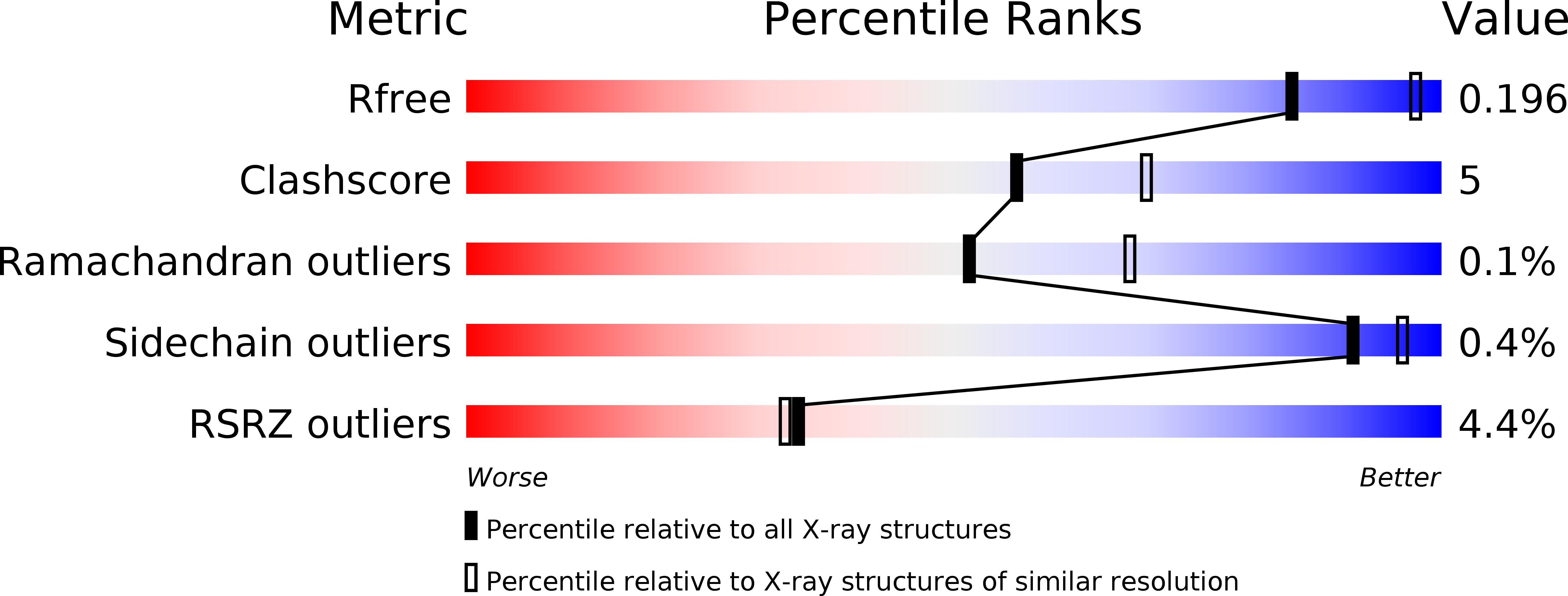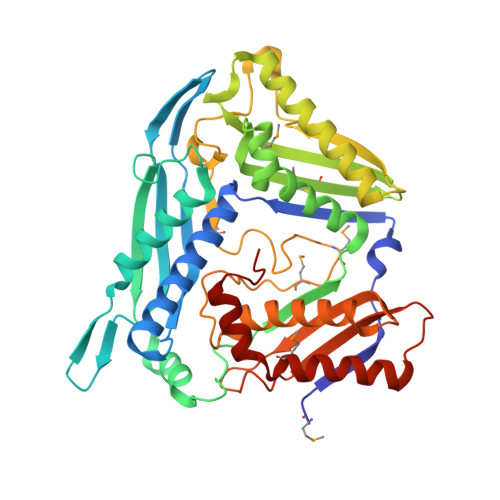Understanding molecular recognition of promiscuity of thermophilic methionine adenosyltransferase sMAT from Sulfolobus solfataricus.
Wang, F., Singh, S., Zhang, J., Huber, T.D., Helmich, K.E., Sunkara, M., Hurley, K.A., Goff, R.D., Bingman, C.A., Morris, A.J., Thorson, J.S., Phillips, G.N.(2014) FEBS J 281: 4224-4239
- PubMed: 24649856
- DOI: https://doi.org/10.1111/febs.12784
- Primary Citation of Related Structures:
4HPV, 4K0B, 4L2Z, 4L7I - PubMed Abstract:
Methionine adenosyltransferase (MAT) is a family of enzymes that utilizes ATP and methionine to produce S-adenosylmethionine (AdoMet), the most crucial methyl donor in the biological methylation of biomolecules and bioactive natural products. Here, we report that the MAT from Sulfolobus solfataricus (sMAT), an enzyme from a poorly explored class of the MAT family, has the ability to produce a range of differentially alkylated AdoMet analogs in the presence of non-native methionine analogs and ATP. To investigate the molecular basis for AdoMet analog production, we have crystallized the sMAT in the AdoMet bound, S-adenosylethionine (AdoEth) bound and unbound forms. Notably, among these structures, the AdoEth bound form offers the first MAT structure containing a non-native product, and cumulatively these structures add new structural insight into the MAT family and allow for detailed active site comparison with its homologs in Escherichia coli and human. As a thermostable MAT structure from archaea, the structures herein also provide a basis for future engineering to potentially broaden AdoMet analog production as reagents for methyltransferase-catalyzed 'alkylrandomization' and/or the study of methylation in the context of biological processes. PDB IDs: 4HPV, 4L7I, 4K0B and 4L2Z. EC 2.5.1.6 STRUCTURED DIGITAL ABSTRACT: • sMAT and sMAT bind by x-ray crystallography (View interaction).
Organizational Affiliation:
Department of Biochemistry and Cell Biology, Rice University, Houston, TX, USA.



















